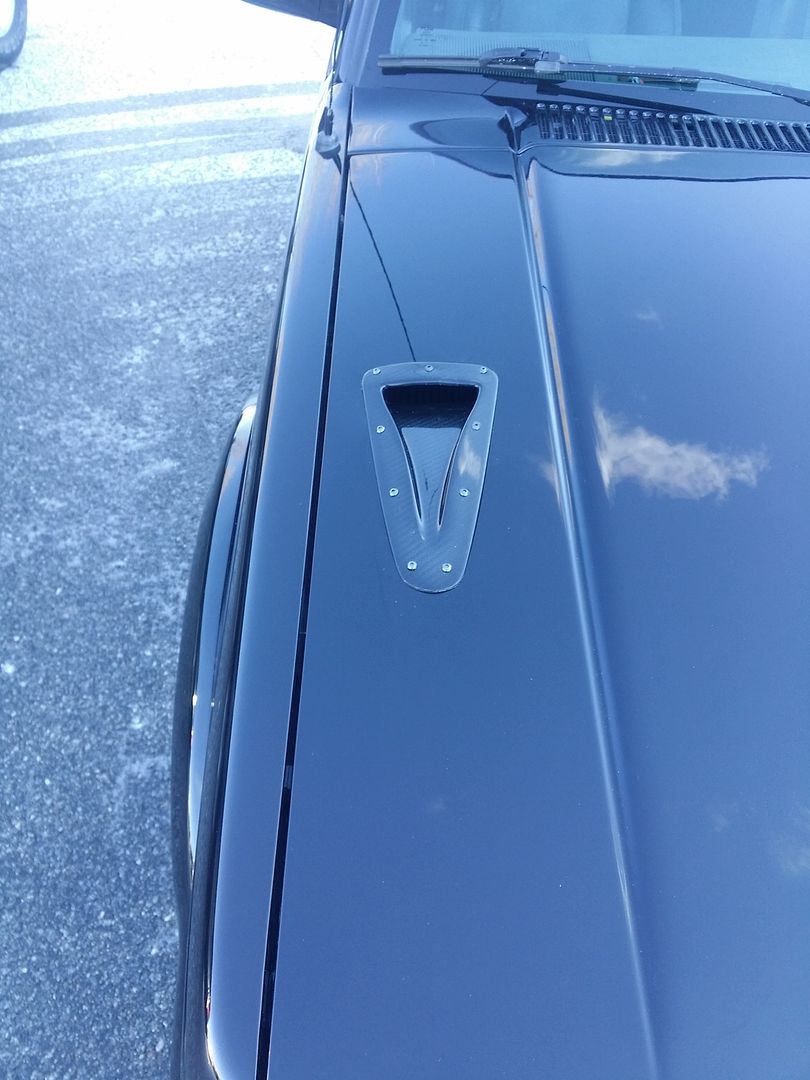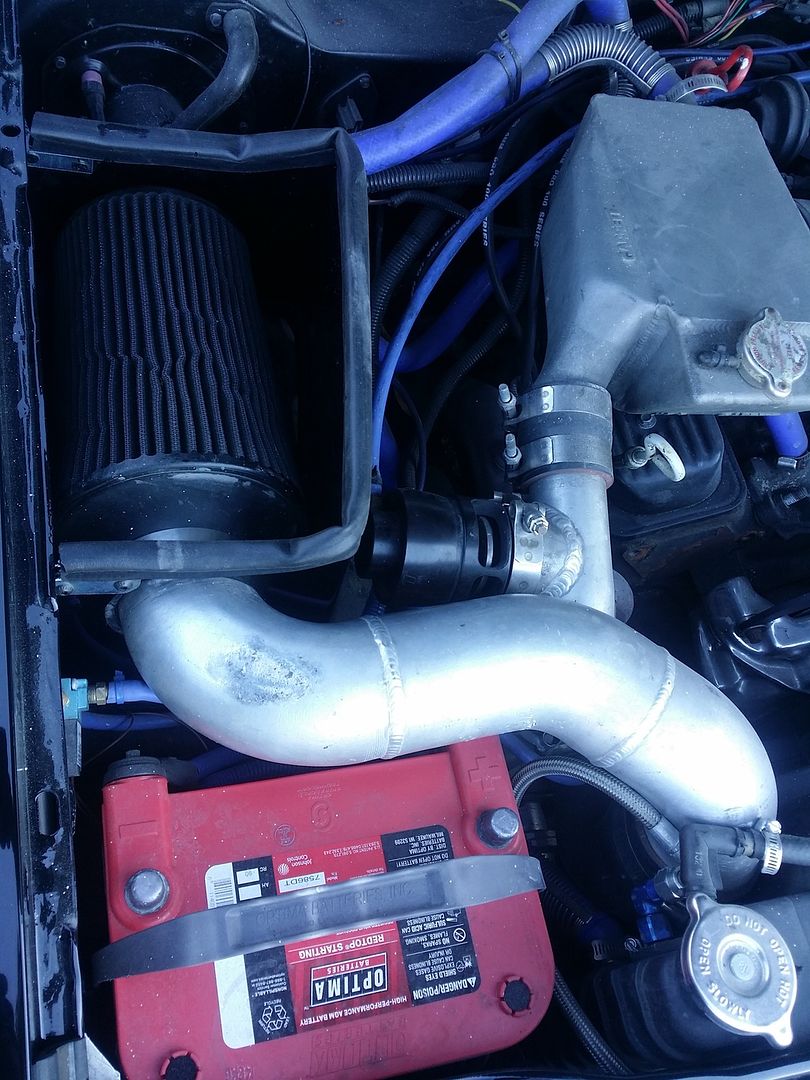enu.kz/repository/2010/AIAA-2010-4955.pdf
Link should lead to a 2010 paper titled Aerodynamic Drag and Flow Rate through Engine Compartments. It is the best analytical/empirical summary of the topic I have found.
It says the ideal method of exhausting engine heat is via a duct to the theoretical tail of the car, this would provide maximum aero efficiency for cooling.
In the real world as it applies to our cars, it says seal the heat exchangers tightly to the intake shrouds so that little or no air bypasses them to use all available air flow for cooling, and loose heat via low pressure areas below the car, preferably via the exhaust/downpipe location, secondly via wheel wells, and least desirable, just behind air dam. Desirability determined by how efficiently overall drag is reduced.
So on to some hard data.
Test car is my Fist in track trim, still have extended air dam on it, all air pressures recorded at 80 mph, I doubt many of us average more than that per lap wherever we track. Anyway, something had to be constant so I picked that speed. Air pressures are vs cabin pressure with windows up and A/C on, so reference is probably slightly above gauge.
The Pyle manometer I picked up does differential pressures, I did not find A/C on vs outside air to be more than a few hundreths positive sitting still.
Thus far my measurements using a digital manometer indicate our engine bay is -0.2-0.3 inches H2O at underside of hood (tested 8 locations), about -0.4 inches about half-way down engine compartment front, back and siides, and about -0.5" right behind air dam. I.e our engine compartment operates at a slight vacuum at 80 mph, said vacuum becoming stronger measured closer to ground.
I only took one set of measurements in front of radiator/condenser, +0.8". In other words, we have 1.2" H2O pressure drop across radiator/condenser and IC.
From what I have read, this is a pretty strong pressure gradient. And from experience most of the community knows we need all the cooling we can get.
So what? Well, I do not see a place to put hood vents that will accomplish much. I really like the WRC vents, but these data suggest they will pull cool air from over hood into rear of engine bay, not exhaust hot air up and back as I had assumed.
This might be a good idea if delta P across heat exchangers is not reduced, could be detrimental if it is reduced, or maybe we have plenty of flow through heat exchangers and can afford to loose some of it to waste more heat out downpipe area and reduce high pressure at windshield. Aero and cooling gains.
These data also suggest the OEM air intake is very well designed and is difficult to improve upon. But snorkel could be very good mod.
Also suggest there is a lot of subtlety to radiators, its all about heat transfer rate, tracking is the toughest on them, as we already know, but bigger will only be better if heat transfer rate is improved.
I have yet to find a way to evaluate pressure delta across radiator, and heat exchange efficiency vs that pressure delta. Seems like an important part of this line of inquiry.
Link should lead to a 2010 paper titled Aerodynamic Drag and Flow Rate through Engine Compartments. It is the best analytical/empirical summary of the topic I have found.
It says the ideal method of exhausting engine heat is via a duct to the theoretical tail of the car, this would provide maximum aero efficiency for cooling.
In the real world as it applies to our cars, it says seal the heat exchangers tightly to the intake shrouds so that little or no air bypasses them to use all available air flow for cooling, and loose heat via low pressure areas below the car, preferably via the exhaust/downpipe location, secondly via wheel wells, and least desirable, just behind air dam. Desirability determined by how efficiently overall drag is reduced.
So on to some hard data.
Test car is my Fist in track trim, still have extended air dam on it, all air pressures recorded at 80 mph, I doubt many of us average more than that per lap wherever we track. Anyway, something had to be constant so I picked that speed. Air pressures are vs cabin pressure with windows up and A/C on, so reference is probably slightly above gauge.
The Pyle manometer I picked up does differential pressures, I did not find A/C on vs outside air to be more than a few hundreths positive sitting still.
Thus far my measurements using a digital manometer indicate our engine bay is -0.2-0.3 inches H2O at underside of hood (tested 8 locations), about -0.4 inches about half-way down engine compartment front, back and siides, and about -0.5" right behind air dam. I.e our engine compartment operates at a slight vacuum at 80 mph, said vacuum becoming stronger measured closer to ground.
I only took one set of measurements in front of radiator/condenser, +0.8". In other words, we have 1.2" H2O pressure drop across radiator/condenser and IC.
From what I have read, this is a pretty strong pressure gradient. And from experience most of the community knows we need all the cooling we can get.
So what? Well, I do not see a place to put hood vents that will accomplish much. I really like the WRC vents, but these data suggest they will pull cool air from over hood into rear of engine bay, not exhaust hot air up and back as I had assumed.
This might be a good idea if delta P across heat exchangers is not reduced, could be detrimental if it is reduced, or maybe we have plenty of flow through heat exchangers and can afford to loose some of it to waste more heat out downpipe area and reduce high pressure at windshield. Aero and cooling gains.
These data also suggest the OEM air intake is very well designed and is difficult to improve upon. But snorkel could be very good mod.
Also suggest there is a lot of subtlety to radiators, its all about heat transfer rate, tracking is the toughest on them, as we already know, but bigger will only be better if heat transfer rate is improved.
I have yet to find a way to evaluate pressure delta across radiator, and heat exchange efficiency vs that pressure delta. Seems like an important part of this line of inquiry.




![Really Confused [???:)] [???:)]](/images/smilies/confused.gif)